PV Systems: Grounding
By: JADE Learning | Apr 29, 2015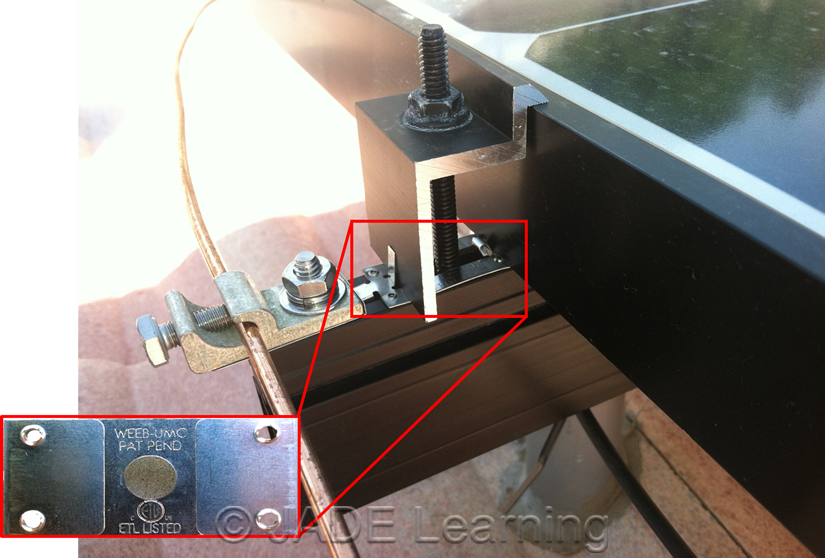
In the past few blog posts we have discussed some of the more important issues related to the PV system including PV modules, PV source circuits, PV output circuits, and inverters. Now let’s talk about PV grounding.
Equipment Grounding
In most PV installations, the PV modules are fastened to a metal rack-type mounting structure and the modules are then grounded to the structure by small metal crush washers W.E.E.B.’s (washer electric equipment bond) that are listed for grounding (see Figure 1).
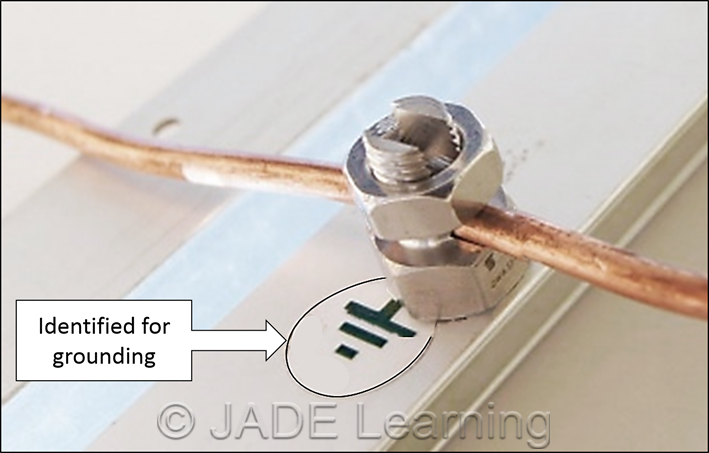
Section 690.43(A) requires the metallic PV module frames to be grounded regardless of voltage. According to section 690.43(C), if we are using the mounting rack as the equipment grounding conductor for the PV modules that are secured to it, then the rack must be identified for equipment grounding, or a bonding jumper must be installed between each section of rack. Most mounting racks that are listed for grounding will have identified grounding terminals or threaded holes for a ground screw (see Figure 2).
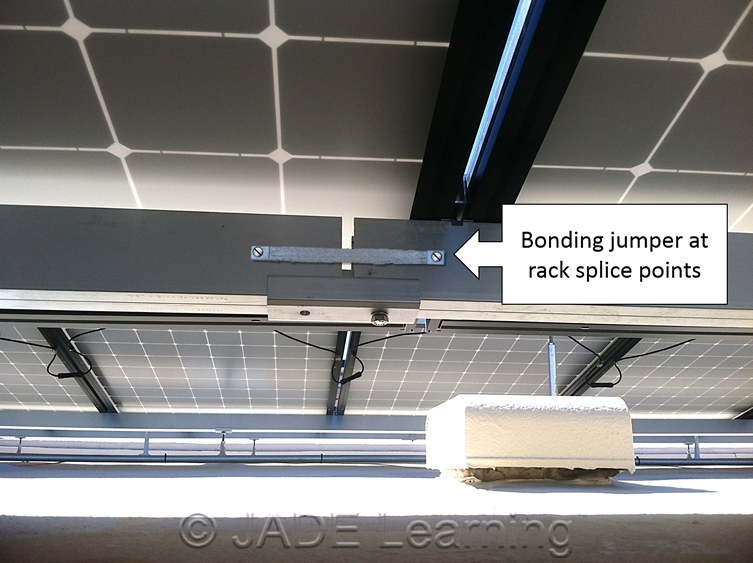
If the mounting rack is not identified as an equipment grounding conductor, then identified bond jumpers are required where sections of the rack system join with other sections (see Figure 3). The main idea is to ensure that the frames of all PV modules as well as the metal mounting systems are continuous and connected to ground. A mounting structure listed for grounding will have specific instructions that must be followed in order to ensure that any spliced sections of the rack are electrically continuous. PV mounting racks that are not listed for grounding must have bonding jumpers installed around each section of the PV rack.
System Grounding
PV system grounding is also required. PV systems can be installed as grounded or ungrounded systems. That decision is made by choosing either a grounded-type inverter or an inverter for use in an ungrounded system.
NEC section 690.47 covers all of the PV system grounding requirements, but it is not an easy section to read.
Section 690.47(A) provides system grounding requirements for alternating-current systems. Alternating-current systems are far less common than direct-current systems.
Section 690.47(B) addresses direct current systems (both grounded and ungrounded). Many installers feel that there are no grounding requirements for an ungrounded PV system because the system is not grounded and there are no grounded conductors (only positive and negative). This section tells us differently. The DC grounding electrode system for grounded systems must be installed per 250.166, and for ungrounded systems, the requirements in 250.169 will apply. In an ungrounded PV system, the grounding electrode conductor is used to ground the metal enclosures, raceways, cables, and equipment.
Section 690.47(C) applies when we have both alternating current and direct current grounding requirements. This section provides three methods to choose from to properly ground the PV system which can be seen in Figures 4, 5, and 6.
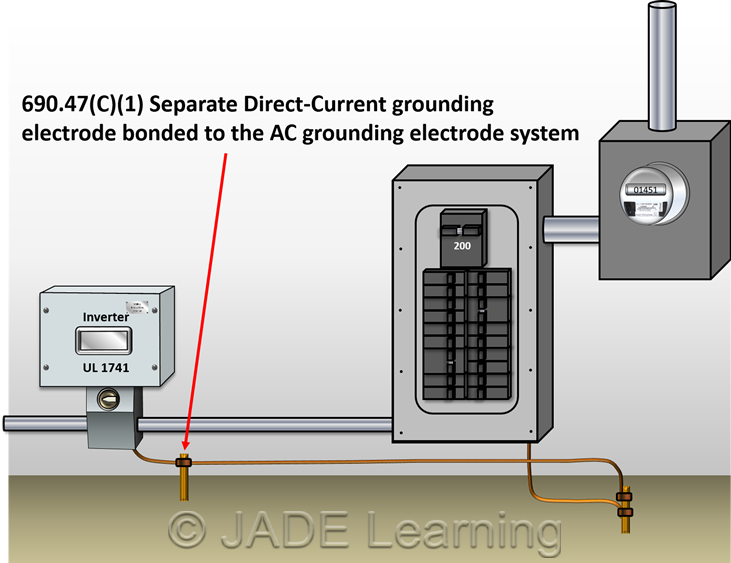
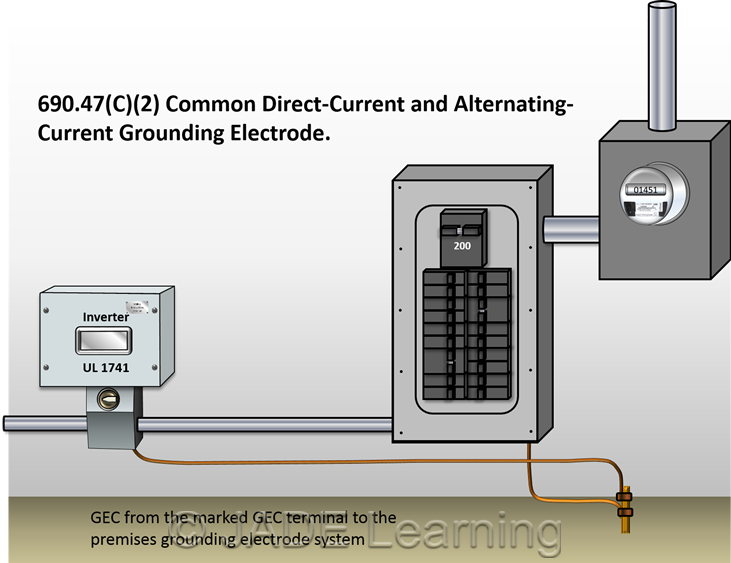
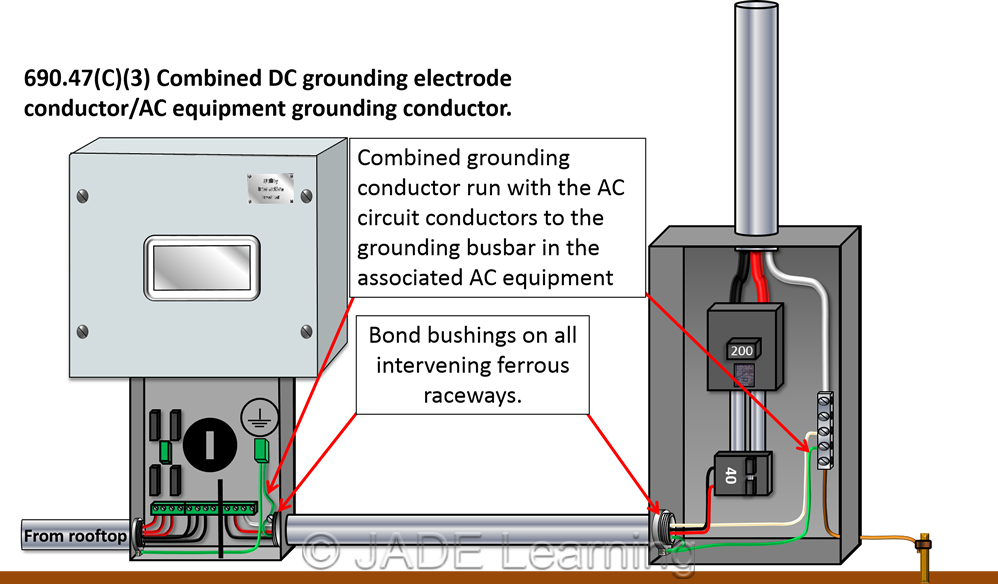
Finally, the additional electrode required for PV arrays, which came into the NEC in 2008 and disappeared in the 2011 NEC, has been brought back into the 2014 NEC in Section 690.47(D). (see Figure 7).
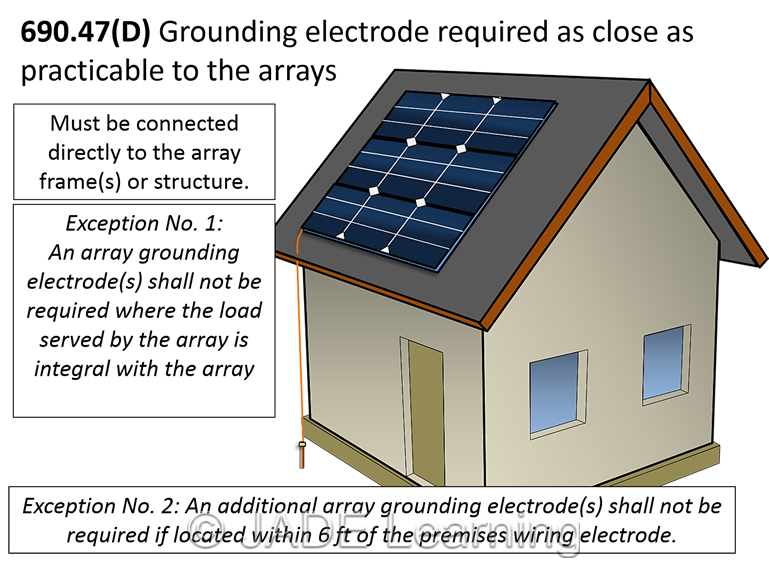
Ready to learn more about PV? Sign up for one of our JADE Learning continuing education courses.


